Find Help
More Items From Ergsy search
-
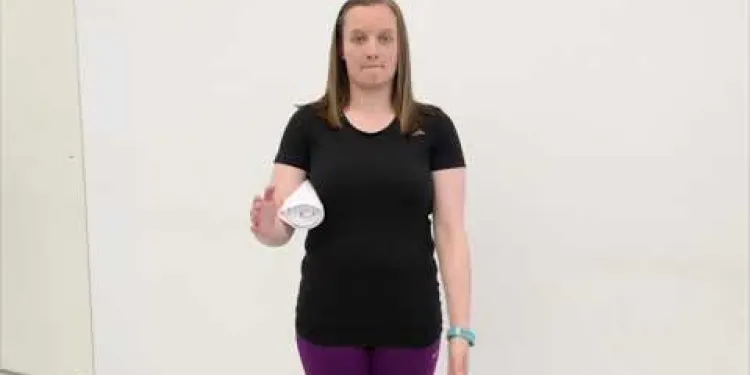
Frozen Shoulder Isometric External Rotation
Relevance: 100%
-

Frozen Shoulder Lateral Rotation
Relevance: 63%
-
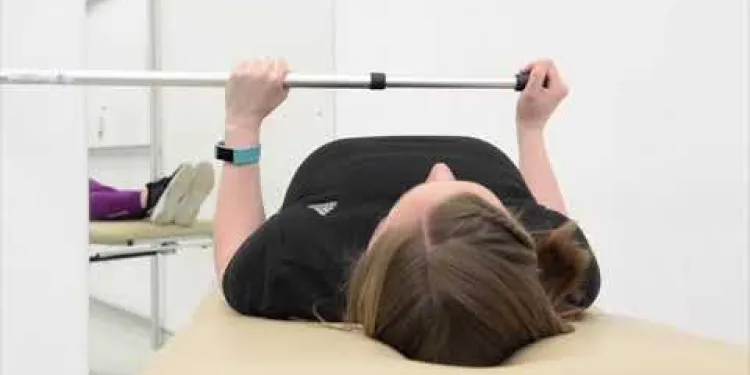
Frozen Shoulder Assisted Lateral Rotation
Relevance: 60%
-
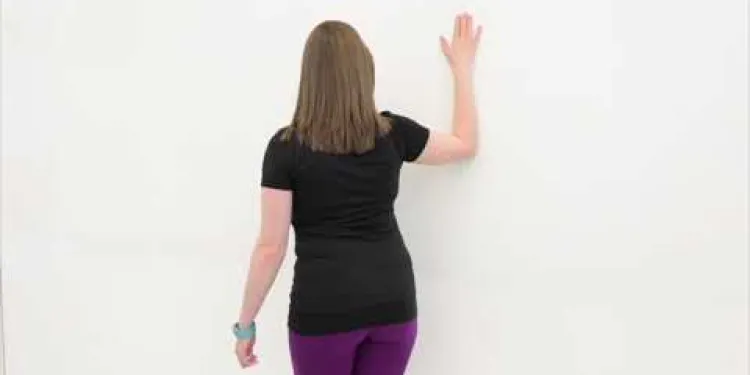
Frozen Shoulder Anterior Shoulder Stretch
Relevance: 40%
-
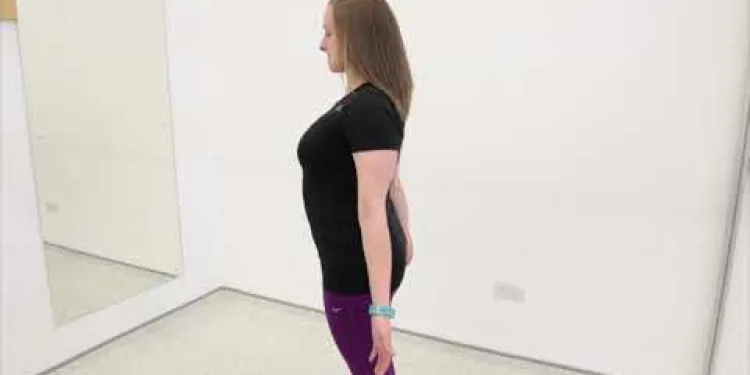
Frozen Shoulder Scapular Setting
Relevance: 38%
-

Frozen Shoulder Assisted Abduction
Relevance: 38%
-
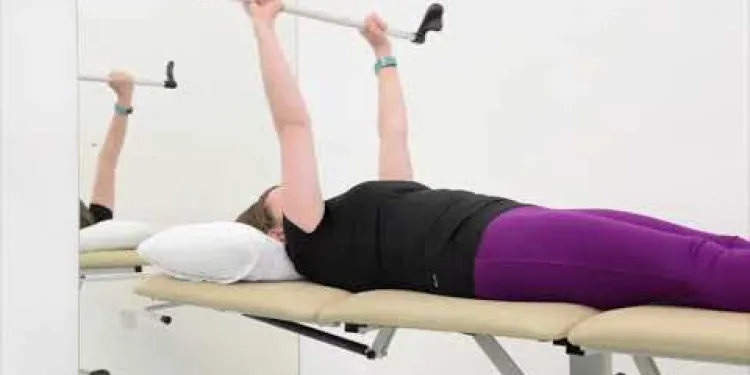
Frozen Shoulder Assisted Flexion
Relevance: 38%
-
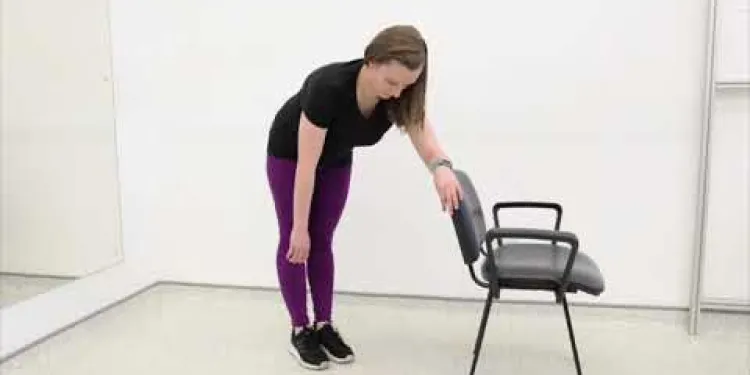
Frozen shoulder Pendular Exercises
Relevance: 37%
-
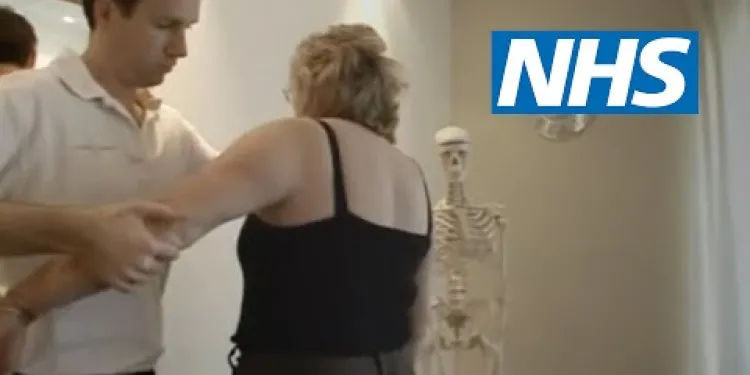
Shoulder pain | NHS
Relevance: 32%
-

Shoulder pain | NHS
Relevance: 32%
-

Shoulder subacromial shoulder pain
Relevance: 26%
-

Shoulder Exercises 1
Relevance: 25%
-
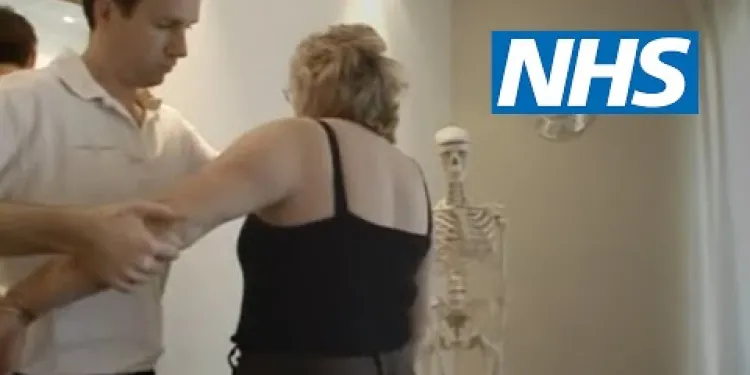
Shoulder pain | NHS
Relevance: 24%
-
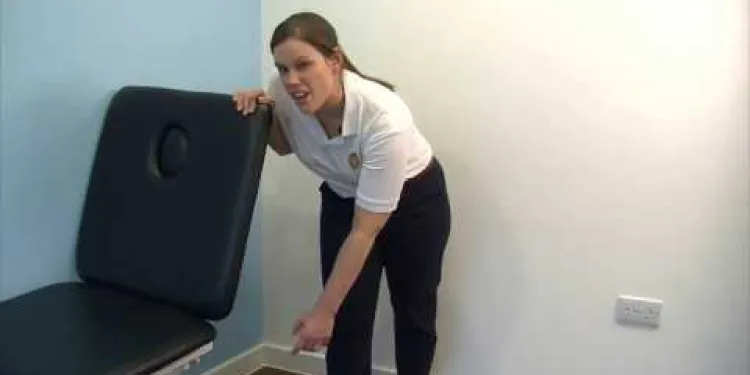
DBTH VFC DISLOCATED SHOULDER
Relevance: 19%
-

Unfreezing the Truth The UK's Frozen Pensions
Relevance: 19%
-

What role do external advisors play in director disputes?
Relevance: 17%
-

Neck Exercises
Relevance: 12%
-
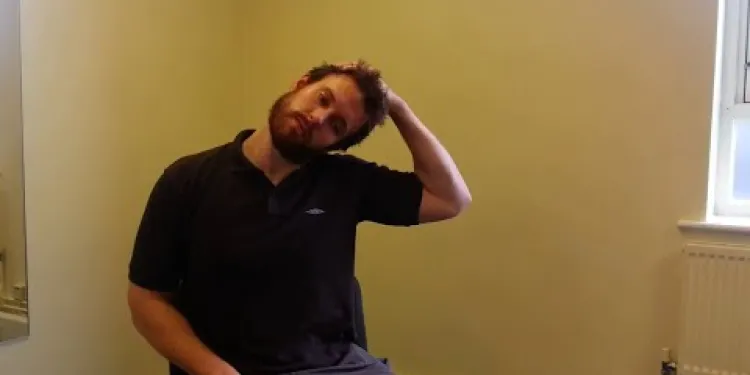
Neck Care Exercises
Relevance: 11%
-

Neck Exercises
Relevance: 10%
-

How is Wegovy administered?
Relevance: 9%
-

What types of blood products can be transfused?
Relevance: 7%
-

What are the different types of defibrillators?
Relevance: 7%
-

What is plasma, and why might it be transfused?
Relevance: 7%
-

What can I buy with Healthy Start vouchers?
Relevance: 7%
-

How is Ozempic administered?
Relevance: 6%
-

How can I prevent Carpal Tunnel Syndrome?
Relevance: 6%
-

Back stretches | NHS
Relevance: 6%
-

What is a defibrillator?
Relevance: 6%
-

How is the sperm used in IVF?
Relevance: 6%
-

Exercises for sciatica: piriformis syndrome | NHS
Relevance: 6%
-

How is Ozempic administered?
Relevance: 6%
-

Plantar Fascia Cold Therapy
Relevance: 5%
-

What is the SENCO's role in a school?
Relevance: 5%
-

Do chiropractors only treat the spine?
Relevance: 5%
-

Should Mounjaro be refrigerated?
Relevance: 5%
-

How can I shade my house to keep it cool during a heatwave?
Relevance: 5%
-

Pilates for back pain: Seated waist twist | NHS
Relevance: 5%
-

How to inject insulin
Relevance: 5%
-

What is Radiotherapy, and its use in treatment for cancers?
Relevance: 5%
-

What is the difference between an AED and an ICD?
Relevance: 5%
Frozen Shoulder Isometric External Rotation
Understanding Frozen Shoulder
Known medically as adhesive capsulitis, frozen shoulder is a condition characterised by stiffness and pain in the shoulder joint. This condition often develops gradually and can worsen over time, severely limiting the range of motion. Recovery may take several months to a few years, making it vital to adopt appropriate therapeutic exercises to enhance mobility and reduce discomfort.
Benefits of Isometric External Rotation
Isometric exercises, including external rotation, focus on muscle contractions without changing their length. This type of exercise is particularly beneficial for individuals with frozen shoulder as it enhances muscle strength without producing excessive joint movement. This can effectively minimise pain and promote shoulder stability, which is essential for rehabilitation.
How to Perform Isometric External Rotation
To perform isometric external rotation exercises, follow these steps:
- Find a wall or a sturdy doorframe to provide resistance.
- Stand with your affected side next to the wall, bending your elbow at a 90-degree angle.
- Press the back of your hand against the wall without moving your shoulder or arm, focusing on contracting the external rotator muscles.
- Hold the contraction for about 10 to 15 seconds and then release.
- Repeat this process for 3 sets of 10 repetitions daily, gradually increasing the duration of the hold as you build strength.
Consulting a Healthcare Professional
While isometric exercises can be beneficial, it is essential for individuals with frozen shoulder to consult a healthcare professional, such as a physiotherapist, before starting any new exercise regimen. They can provide personalised advice and tailored exercises to suit your specific condition, ensuring a safer and more effective recovery process.
Conclusion
Isometric external rotation exercises are a valuable component of treatment for frozen shoulder. By incorporating these exercises into your routine, you can potentially enhance muscle strength, improve shoulder stability, and speed up recovery. Consult with a healthcare professional to ensure that the exercise is suitable for your condition and receive guidance on the proper technique.
Frozen Shoulder Isometric External Rotation
What is a Frozen Shoulder?
A frozen shoulder makes your shoulder stiff and sore. It can get worse slowly and make it hard to move your shoulder. Getting better can take a long time. Doing the right exercises can help make your shoulder feel better and move easier.
Why Do These Exercises?
Isometric exercises are a kind of workout that helps your muscles without moving them much. They are good if you have a frozen shoulder because they make your muscles stronger without hurting your shoulder. They can help your shoulder feel better and get stronger.
How to Do the Exercise
Here is how you can do the exercise:
- Stand next to a wall or a strong door frame.
- Bend your elbow to a right angle (like an "L" shape) and put your hand against the wall.
- Push the back of your hand against the wall but do not move your shoulder or arm.
- Hold the push for about 10 to 15 seconds, then let go.
- Do this 10 times, and try to do 3 sets every day. As you get stronger, try to hold the push for a bit longer each time.
Talk to a Health Expert
Before starting these exercises, it is important to talk to a health expert like a physiotherapist. They can help you with special advice and exercises that are right for you. This will keep you safe and help you get better faster.
What This Exercise Can Do for You
The isometric external rotation exercise can help people with a frozen shoulder. Doing this exercise can make your shoulder muscles stronger, help your shoulder move better, and help you heal faster. Always ask a health expert to check if this is good for you and to make sure you are doing it right.
Frequently Asked Questions
What is a frozen shoulder?
A frozen shoulder, or adhesive capsulitis, is a condition characterised by stiffness and pain in the shoulder joint.
What causes a frozen shoulder?
The exact cause of frozen shoulder is not fully understood, but it is often related to injury, surgery, or conditions such as diabetes.
What is isometric external rotation?
Isometric external rotation is a shoulder exercise where the muscle contracts without changing length, typically by pressing the back of the hand against a wall or immovable object.
How can isometric external rotation help with a frozen shoulder?
Isometric external rotation exercises can help improve strength and stability in the shoulder, reduce pain, and gradually increase range of motion.
Are there any precautions I should take before doing isometric exercises for a frozen shoulder?
Yes, it is advisable to consult a healthcare professional before starting any exercise regimen, especially if you have underlying health conditions.
How often should I perform isometric external rotation exercises?
Frequency can vary, but generally, performing the exercises 3-4 times a week can be effective. Always follow the guidance of a healthcare professional.
How long should I hold each isometric contraction?
Typically, holding each contraction for about 10-20 seconds is recommended, but this can vary based on individual strength and endurance.
What equipment do I need for isometric external rotations?
You generally do not need any special equipment; a wall or immovable object to press against is usually sufficient.
Can I do these exercises at home?
Yes, isometric external rotation exercises can easily be done at home.
Are there any side effects of doing isometric external rotation exercises?
When done properly, side effects are minimal, but overexertion can lead to muscle strain or aggravation of the shoulder.
How soon can I expect to see results?
Results can vary, but some individuals may notice improvements in pain and mobility within a few weeks of consistent exercise.
Can I combine isometric external rotations with other treatments for frozen shoulder?
Yes, these exercises can be part of a comprehensive treatment plan that may include physical therapy, medication, or other modalities as advised by a healthcare professional.
What should I do if I feel pain during the exercise?
If you experience pain, stop the exercise and consult your healthcare provider. Mild discomfort is normal, but significant pain should be addressed.
How can I ensure I'm doing the exercises correctly?
Consider consulting a physiotherapist or watching instructional videos to ensure proper form and technique.
Are there any alternatives to isometric external rotations for treating frozen shoulder?
Yes, alternatives include other physiotherapy exercises, stretching routines, and sometimes medical or surgical intervention, depending on the severity of the condition.
What is a frozen shoulder?
A frozen shoulder makes it hard to move your shoulder. It can be painful and stiff.
Here are some ways to help:
- Ask a doctor for advice.
- Do gentle shoulder exercises.
- Use a warm towel on your shoulder to feel better.
Remember, it's okay to ask for help!
A frozen shoulder is when your shoulder gets very stiff and hurts a lot. This is also called adhesive capsulitis. It makes it hard to move your shoulder.
Why does a shoulder freeze?
A frozen shoulder happens when the shoulder gets stiff and hurts.
Here's why it might happen:
- A past injury or surgery
- Not moving the shoulder for a long time
- Health problems like diabetes
Ways to help:
- Regular gentle exercises
- Seeing a doctor or therapist
We don't know exactly why people get frozen shoulder. But it can happen after you hurt yourself, have an operation, or if you have a sickness like diabetes.
What is isometric external rotation?
Isometric external rotation is a type of exercise. It helps make your shoulder muscles stronger.
Here is how you do it:
- Keep your arm still and do not move it.
- Try to turn your hand or arm outward, but do not let it move.
- Hold this position for a few seconds.
This exercise is good for your shoulder and can help you if you feel weak or sore there.
Ask a friend or a coach to help if you need support. You can also try using a mirror to check your position.
Isometric external rotation is a shoulder exercise. In this exercise, your muscle tightens but does not get longer or shorter. You do this by pushing the back of your hand against a wall or something that can't move.
How can an exercise help with a frozen shoulder?
A frozen shoulder makes it hard to move your arm. Doing simple exercises can help. One exercise is called 'isometric external rotation'.
You can try this exercise by following these steps:
- Stand with your arm bent at your side.
- Hold your elbow close to your body.
- Push your hand gently against a wall or with your other hand.
- Hold for a few seconds, then relax.
- Repeat a few times.
This exercise can slowly make your shoulder feel better.
Ask a grown-up or a physical therapist to help you if it's too hard.
Doing certain arm exercises can make your shoulder stronger and steadier. These exercises can also help your shoulder hurt less and move better bit by bit.
What should I do before starting shoulder exercises if my shoulder is stiff?
Yes, it is a good idea to talk to a doctor before you start exercising. This is very important if you have health problems.
How often should I do shoulder exercises without moving?
How often you do the exercises can be different for everyone. It is usually good to do them 3 to 4 times each week. Always listen to what your doctor or healthcare worker tells you.
How long should I hold each isometric contraction?
Isometric exercises are when you hold your body in one position without moving. This helps your muscles get stronger.
It is easy to do:
- Get into the position needed for the exercise.
- Hold still like a statue.
- Try to hold for 5 to 10 seconds.
- If it feels good, you can try holding for a little longer.
Remember:
- Breathe slowly while you hold.
- Stop if it starts to hurt.
- Practice will help you get better!
If you want help, ask a grown-up or use a timer to count the seconds.
Usually, you should hold each squeeze for about 10 to 20 seconds. But it can be different for each person. Some people might do it for less time or more time. It depends on how strong or how tired you feel.
What things do I need to do isometric external rotations?
Here is a list of things you need:
- A resistance band
- A sturdy pole or door handle
- Comfortable clothes
Tip: You can also ask someone to help you or watch a video to learn how to do this exercise.
You don't need any special stuff. Just use a wall or something that doesn't move to push against.
Can I do these exercises at home?
Yes! You can do these exercises at home. You just need a safe space and some time.
Here are some tools that can help:
- Timer: Use a timer to keep track of how long you do each exercise.
- Video Guides: Watch videos to see how to do the exercises.
- Music: Play music to make exercise more fun.
Remember to go slow and stop if you feel any pain.
Yes, you can do isometric external rotation exercises at home.
Can isometric external rotation exercises cause any problems?
Isometric external rotation exercises are movements that make your shoulder stronger.
Most people do them without any problems.
But some people might feel a bit of pain or stiffness in their shoulder. This is normal.
If your shoulder hurts a lot or feels bad, tell a doctor or a teacher who helps with exercises.
Always start these exercises slowly and gently.
If you have a band or towel for support, it can help you do the exercises safely.
If you do it right, there are not many bad effects. But if you try too hard, you might hurt your muscles or make your shoulder feel worse.
Here are some tips to help you:
- Take breaks and rest when you feel tired.
- Ask a friend for help if you need it.
- Use simple tools or apps that help with exercise.
- Talk to a doctor if your shoulder hurts a lot.
When will I see changes?
You might want to know when things will start to change. Everyone is different, so it can take different times for people. Some people see changes quickly. For others, it might take a bit longer.
It's good to be patient. Keep doing what you’re doing, and you'll see changes soon.
If you want, you can ask a friend or use a diary to keep track of changes. That might help you see how you’re doing.
Results are different for everyone. But some people feel less pain and can move better after doing exercises for a few weeks.
Can I do isometric external rotations with other treatments for a frozen shoulder?
Yes, you can do these exercises to help you feel better. Your doctor might also tell you to do other things like physical therapy or take medicine.
What should I do if it hurts while I exercise?
If you feel pain when you are exercising, stop and rest. Do not keep going if it hurts.
Tell a teacher, friend, or family member about the pain. They can help you.
Use simple tools like a hot or cold pack to feel better. You can also try gentle stretches.
Remember, it is important to listen to your body. If the pain does not go away, talk to a doctor.
If you feel pain, stop doing the exercise. Talk to your doctor or nurse. It's okay to feel a little bit of discomfort, but a lot of pain needs to be checked out.
How can I make sure I do the exercises right?
Here is a list of things that can help:
- Get a teacher: A teacher or coach can show you the right way to do exercises.
- Watch videos: Watch videos online. They can show you how to do the exercises step by step.
- Use a mirror: Look in the mirror while you exercise. It helps you check your moves.
- Ask for help: Ask someone who knows how to do the exercises if they can help you.
- Take it slow: Go slow and do not rush. Doing it slow can help you learn the right way.
Try using an app or a notebook to track your progress. This can show you how you get better over time.
Try asking a physiotherapist for help. You can also watch simple videos online to learn how to do it the right way.
What other exercises can help with a frozen shoulder?
Yes, there are other things you can try, like different exercises your physiotherapist can show you. You can also do stretching routines. In some cases, doctors might suggest medicine or surgery if things are really bad.
If reading is hard, try using an audiobook or ask someone to read it to you. You can also use a ruler or your finger to help follow the words.
Useful Links
- Ergsy carfully checks the information in the videos we provide here.
- Videos shown by Youtube after a video has completed, have NOT been reviewed by ERGSY.
- To view, click the arrow in centre of video.
- Most of the videos you find here will have subtitles and/or closed captions available.
- You may need to turn these on, and choose your preferred language.
- Go to the video you'd like to watch.
- If closed captions (CC) are available, settings will be visible on the bottom right of the video player.
- To turn on Captions, click settings .
- To turn off Captions, click settings again.
More Items From Ergsy search
-

Frozen Shoulder Isometric External Rotation
Relevance: 100%
-

Frozen Shoulder Lateral Rotation
Relevance: 63%
-

Frozen Shoulder Assisted Lateral Rotation
Relevance: 60%
-

Frozen Shoulder Anterior Shoulder Stretch
Relevance: 40%
-

Frozen Shoulder Scapular Setting
Relevance: 38%
-

Frozen Shoulder Assisted Abduction
Relevance: 38%
-

Frozen Shoulder Assisted Flexion
Relevance: 38%
-

Frozen shoulder Pendular Exercises
Relevance: 37%
-

Shoulder pain | NHS
Relevance: 32%
-

Shoulder pain | NHS
Relevance: 32%
-

Shoulder subacromial shoulder pain
Relevance: 26%
-

Shoulder Exercises 1
Relevance: 25%
-

Shoulder pain | NHS
Relevance: 24%
-

DBTH VFC DISLOCATED SHOULDER
Relevance: 19%
-

Unfreezing the Truth The UK's Frozen Pensions
Relevance: 19%
-

What role do external advisors play in director disputes?
Relevance: 17%
-

Neck Exercises
Relevance: 12%
-

Neck Care Exercises
Relevance: 11%
-

Neck Exercises
Relevance: 10%
-

How is Wegovy administered?
Relevance: 9%
-

What types of blood products can be transfused?
Relevance: 7%
-

What are the different types of defibrillators?
Relevance: 7%
-

What is plasma, and why might it be transfused?
Relevance: 7%
-

What can I buy with Healthy Start vouchers?
Relevance: 7%
-

How is Ozempic administered?
Relevance: 6%
-

How can I prevent Carpal Tunnel Syndrome?
Relevance: 6%
-

Back stretches | NHS
Relevance: 6%
-

What is a defibrillator?
Relevance: 6%
-

How is the sperm used in IVF?
Relevance: 6%
-

Exercises for sciatica: piriformis syndrome | NHS
Relevance: 6%
-

How is Ozempic administered?
Relevance: 6%
-

Plantar Fascia Cold Therapy
Relevance: 5%
-

What is the SENCO's role in a school?
Relevance: 5%
-

Do chiropractors only treat the spine?
Relevance: 5%
-

Should Mounjaro be refrigerated?
Relevance: 5%
-

How can I shade my house to keep it cool during a heatwave?
Relevance: 5%
-

Pilates for back pain: Seated waist twist | NHS
Relevance: 5%
-

How to inject insulin
Relevance: 5%
-

What is Radiotherapy, and its use in treatment for cancers?
Relevance: 5%
-

What is the difference between an AED and an ICD?
Relevance: 5%


